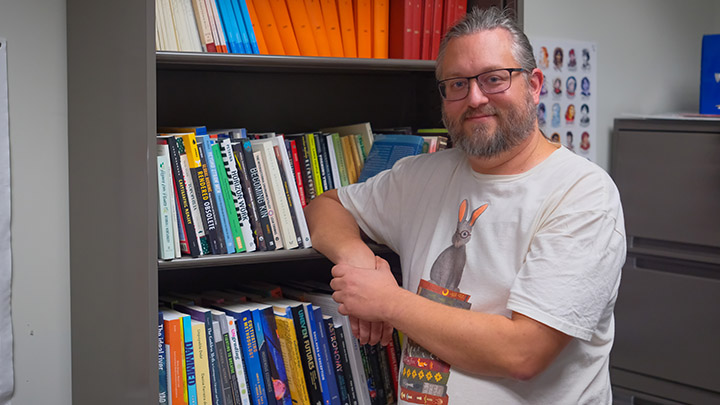A Slippery Rock University professor is getting their name and research on the map –– literally. Stentor Danielson, an SRU associate professor of environmental geosciences, has published a book of 50 maps of Pittsburgh and places within the city. The book, released earlier this year and titled “Pittsburgh in 50 Maps,” considers the boundaries of the city’s 90 distinct neighborhoods, the legacy of the steel industry, and how immigration continues to shape the city, according to its publisher, Arcadia Publishing.
Danielson found the opportunity to write this book through a podcast that they host on the New Books Network. Danielson interviewed the author of the previous installment, “Buffalo in 50 Maps,” who shared that the publisher was looking for a cartographer from Pittsburgh for the next book. Danielson then got connected to the editor of the series and officially secured the contract to work on “Pittsburgh in 50 Maps.”
Danielson teaches classes at SRU on such issues as geography, environmental justice and gender in the environment, areas that have informed their approach to this book. Danielson calls geography a “hub” that connects many different disciplines, which they say made it feel like an obvious choice to use maps to look at the many different facets of Pittsburgh life.
“It allowed me to look at all kinds of serious issues like racial inequality and air pollution as well as the more entertaining issues,” Danielson said.
Those entertaining issues include the “Pittsburgh Left” and where you can make one in the city, and the infamous parking spot in front of the Evergreen Café on Penn Avenue that is disputed as being unsafe for passing drivers.
While putting their book together, Danielson also drew inspiration from the sorts of maps included in previous books in the series.
“I looked through the tables of contents of the other books and picked out some ideas that would apply to Pittsburgh as well,” Danielson said. “Others maps were inspired by things that I thought would be important as someone who has lived in and near Pittsburgh for the last 15 years. The goal was to compile maps about things that concern people in Pittsburgh. What do people in Pittsburgh talk about? What do they see and think about day to day? What might qualify as news in the city?”
These were all questions that guided Danielson in creating a book that engages with these questions.
“Most people have places that they commonly go to like their house, their job, their favorite restaurant,” Danielson said. “Seeing how those places fit together with everything else in the city can give a new perspective on what the city is for you and what might be going on around you. Things that you might not have been thinking about or paying attention to.”
Danielson hopes that readers will have fun with this book while also gaining a better understanding of their place in their community and the world at large.
More information about the book and how to purchase it is available on the Arcadia Publishing website.

